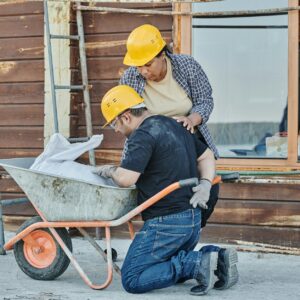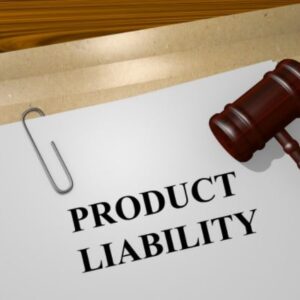Construction sites are inherently dangerous places. Heavy machinery, tight deadlines, and complex operations create an environment where accidents can happen in an instant. While worker error sometimes plays a role, a frightening number of incidents stem from something far more preventable: equipment malfunctions. Is the machinery around you safe, or is it a ticking time bomb?
Understanding Common Equipment Malfunctions on Construction Sites
Think about the sheer variety of tools and machines used every day. Cranes, bulldozers, forklifts, power tools – each piece of equipment presents its own unique set of potential failures. Some common culprits include:
- Brake failure: A crane’s brakes give out, sending a load crashing down. A forklift’s brakes fail, resulting in a collision. These are not just theoretical scenarios; they happen all too often.
- Hydraulic system failures: Excavators, loaders, and other heavy equipment rely on hydraulic systems. Leaks, hose bursts, or pump failures can render them uncontrollable.
- Electrical malfunctions: Faulty wiring, short circuits, and damaged electrical components can lead to fires, electrocution, or unexpected equipment shutdowns.
- Structural failures: Metal fatigue, corrosion, or manufacturing defects can cause critical components to break under stress, leading to catastrophic collapses. A tragic 2019 scaffolding collapse in Texas, resulting in multiple injuries, was attributed, in part, to structural deficiencies in the scaffolding itself.
- Warning system failures: If backup alarms, load indicators, or safety shutoffs fail, operators can be unaware of dangerous conditions.
Data from the Bureau of Labor Statistics consistently shows that equipment-related incidents are a significant contributor to construction site injuries and fatalities. In 2022, “machinery” was involved in nearly 10% of fatal construction site accidents.
Identifying and Reporting Potential Construction Equipment Safety Hazards
Spotting a problem before it causes an accident is crucial. Are you noticing any of these signs?
- Unusual noises or vibrations from equipment
- Leaks of fluids (oil, hydraulic fluid, coolant)
- Visible damage (cracks, dents, corrosion)
- Malfunctioning safety features (lights, alarms, guards)
- Erratic or unpredictable equipment behavior
- “Ghosting” – When equipment runs on it’s own without controls engaged.
If you spot any of these, immediately report them to your supervisor. Document the issue, including the date, time, specific problem, and equipment identification number. If your concerns aren’t addressed promptly, consider taking it up the chain of command or even contacting OSHA directly.
Proactive Construction Site Safety Measures to Prevent Equipment Accidents
Prevention is always better (and cheaper) than cure. There are a number of steps that can be taken to improve safety:
- Regular Inspections: OSHA mandates regular inspections of construction equipment. Follow these guidelines and document meticulously.
- Preventive Maintenance: Implement a comprehensive preventive maintenance program to catch and fix issues before they become major problems. Emerging technologies like IoT sensors can monitor equipment performance in real-time, enabling predictive maintenance and preventing unexpected breakdowns. Some companies are even experimenting with drones to remotely inspect hard-to-reach areas of equipment.
- Proper Equipment Selection: Make sure the right tools are being used for each task. Overloading equipment or using it in ways it wasn’t designed for greatly increases the risk of failure.
Legal Rights and Options After a Construction Accident Involving Malfunctioning Equipment
If you’ve been injured in a construction accident due to equipment malfunction, you have rights. You may be entitled to workers’ compensation benefits to cover medical expenses and lost wages. In some cases, you may also have grounds for a lawsuit against the manufacturer of the defective equipment or other responsible parties.
For example, in Liebovich v. Construction Equipment Co., the court found the equipment manufacturer liable for injuries sustained by a worker due to a defect in the design of a crane. Cases like these highlight the importance of holding manufacturers accountable for unsafe products.
The Role of Training and Maintenance in Preventing Equipment Malfunction Construction Accidents
Proper training and regular maintenance are the cornerstones of a safe construction site. Workers need to be thoroughly trained on the safe operation and maintenance of all equipment they use. They also need to know how to identify potential hazards and report them promptly.
Promoting a Culture of Safety to Reduce Construction Accident Risk from Equipment Issues
Ultimately, preventing equipment malfunction accidents requires a strong safety culture on the construction site. This means:
- Management must prioritize safety above all else, including deadlines and profits.
- Workers must be empowered to speak up about safety concerns without fear of reprisal.
- Safety meetings and training should be held regularly to reinforce safety procedures.
- Near-miss incidents should be investigated thoroughly to identify and address underlying causes.
By focusing on prevention, proper training, and a strong safety culture, we can significantly reduce the risk of construction accidents caused by equipment malfunctions and create safer working environments for everyone.




